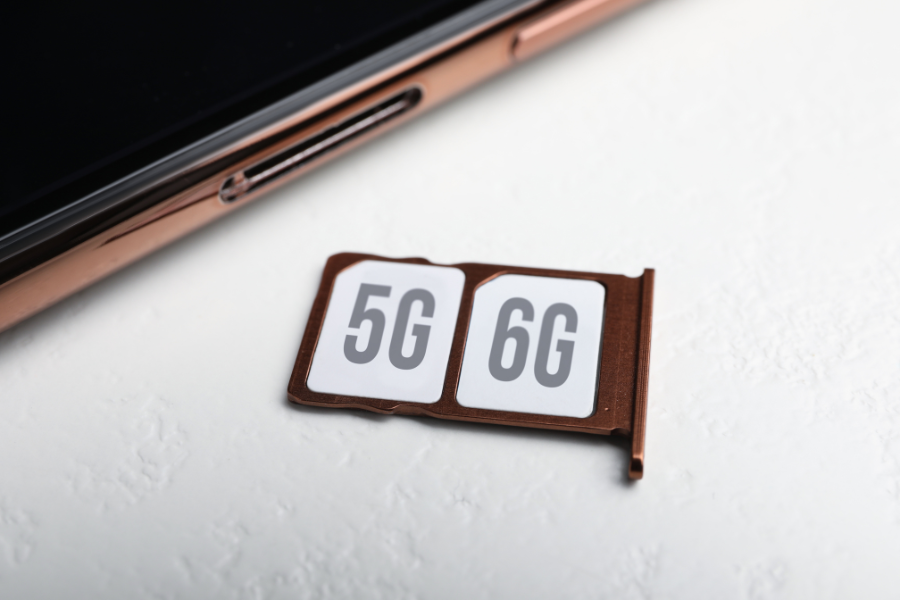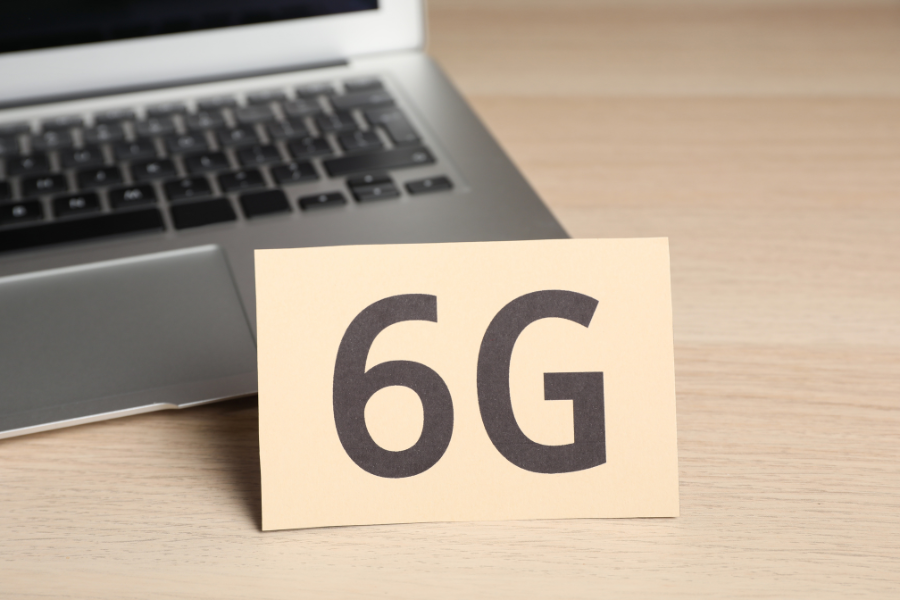HOT OFFER! Save $180 on selected internet plans + get beIN SPORTS CONNECT included!...Use promo code BEIN30 at checkout! Hurry, limited time only!
Since its introduction, 5G has revolutionised wireless technology with significant advancements in speed, latency, and connectivity. It enabled higher data rates, improved network efficiency, and supported an unprecedented number of connected devices, paving the way for innovations in areas like IoT, autonomous vehicles, and smart cities.
However, the 6G network promises to take these capabilities to new and exciting heights. The prospect of 6G is not just the next step forward in the evolution of the internet—it represents a huge step forward in wireless communications that will lay the groundwork for awe-inspiring innovations we’ve only just begun to imagine.
In this exploration of 6G technology, we’ll look into what sets it apart from 5G, the technologies driving its development, and the potential it holds to transform our world.
What is 6G?
6G refers to the sixth generation of wireless communications technology, succeeding the current 5G networks.
6G will not just be a slight improvement on 5G, but a significant leap forward, promising speeds, capacities, and low latencies that far surpass 5G capabilities. The 6G network is set to become a cornerstone of the next generation of digital systems, powering everything from advanced virtual reality experiences to comprehensive smart city infrastructures.
What do we know about 6G technology so far?
Unlike 5G, which focuses primarily on enhanced mobile broadband and reliable communication, 6G aims to integrate these aspects with cutting-edge technologies like machine learning, artificial intelligence, and advanced edge and core computing. This integration is expected to enable new applications and experiences, pushing the limits of what’s possible with mobile networks.
Essential 6G network terms you need to know
Before we go any further, let’s take a look at some of the key terms related to 6G you need to know.
When we talk about internet networks and how they function, the technical jargon can get a bit overwhelming. That said, understanding these terms lays the groundwork for comprehending the more complex aspects of 6G technology and its potential impact on our daily lives and the future of connectivity.
5G
The fifth generation of mobile networks, which set the stage for high-speed internet, low latency, and massive device connectivity. As the precursor to 6G, understanding 5G helps in grasping how 6G will further enhance and expand these capabilities.
Low latency
Refers to the very short delay (measured in milliseconds) between sending and receiving information. In 6G, low latency is crucial for applications requiring real-time responses, such as autonomous vehicles or remote surgeries.
Artificial intelligence (AI)
Intelligence demonstrated by machines, as opposed to natural intelligence displayed by humans. Artificial intelligence in 6G networks will drive smarter and more efficient network operations, user interactions, and service delivery.
Machine learning (ML)
A type of artificial intelligence that enables systems to learn and improve from experience without being explicitly programmed. In the context of 6G, ML will be pivotal for network optimisation, predictive maintenance, and enhancing user experiences.
Frequency bands
These are ranges within the electromagnetic spectrum used for transmitting data in wireless communications. 6G is expected to utilise higher frequency bands (like terahertz frequencies) for faster data transmission, but these come with technical challenges like shorter transmission ranges.
Internet of Things (IoT)
A network of physical objects embedded with sensors, software, and other technologies for connecting and exchanging data with other devices and systems over the internet. 6G will significantly enhance IoT capabilities by providing higher bandwidth and reliable connections for a massive number of IoT devices.
Edge computing
This involves processing data closer to where it is generated (at the edge of the network), rather than in a centralised data-processing warehouse. Edge computing in 6G will help reduce latency and bandwidth use, enhancing applications like real-time analytics and IoT operations.
Core computing
Refers to the processing and analysis of data in central locations (the core of the network). In 6G, core computing will handle more complex processing tasks that can’t be efficiently managed at the edge, often involving large-scale data analysis.

Key technologies behind 6G
The development of the 6G network will be driven by several key technologies.
The combined force of these technologies in 6G means we can look forward to a future where wireless networks are not just faster but smarter, more responsive, and more integrated into our daily lives than ever before.
Machine learning and artificial intelligence
The new 6G network will outperform the current 5G network in many ways. In order to handle these new demands and challenges, 6G will heavily incorporate machine learning and artificial intelligence. Integrated directly into the network, these technologies will enable 6G to intelligently manage data, predict user requirements, and dynamically allocate resources. This will result in a network characterised by excellent efficiency and rapid data transmission.
An example of AI and ML in action could be dynamically predicting and managing cellular network traffic during a large public event—let’s say New Year’s Eve in Sydney CBD. Utilising ML and AI to automatically adjust network traffic flow to handle the increased demand, ensures uninterrupted streaming or communication services for users.
Edge computing
Edge computing is critical for 6G, focusing on processing data close to its source. This approach significantly reduces latency and accelerates data analysis, a must-have for real-time applications such as autonomous vehicles and sophisticated virtual reality experiences. By leveraging edge computing, 6G aims to provide instantaneous processing capabilities, crucial for a seamless user experience.
In a possible future scenario, edge computing will help to facilitate self-driving cars. With data processing happening closer to where it’s generated, an autonomous car could receive real-time information about road conditions, traffic, and obstacles, allowing for immediate adjustments. This minimises latency, which is crucial for the split-second decision-making required in autonomous driving.
Core computing
In addition to edge computing, core computing plays a fundamental role in the 6G network. It involves centrally handling more complex and large-scale data processing tasks. This centralised processing is crucial for managing vast amounts of data and for operations that require extensive computational power. Core computing will support the advanced functionalities of 6G, ensuring robust and efficient network operations across various applications.
A future real-world application of core computing in a 6G environment could be in managing large-scale environmental monitoring systems. A network of sensors deployed across a vast geographic area could be programmed to collect data on weather, pollution levels, and wildlife activities. This data, possibly petabytes daily, would be sent to central computing facilities where powerful servers process and analyse it. By harnessing core computing, environmental scientists and policymakers can gain real-time insights into climate change patterns, pollution hotspots, or endangered species movements, enabling timely, data-driven decisions at a national or even global scale.
Various frequency bands
The 6G network will utilise a diverse range of frequency bands. This includes the sub-1 GHz band for extensive coverage, the mid-band spectrum for wide-area applications, and the mmWave range for high-capacity scenarios in densely populated regions. The use of these varied bands is critical for enabling 6G to deliver internet speeds surpassing 100Gbps, even in areas with high user density. This aspect of 6G is key to achieving a new level of connectivity and bandwidth efficiency.
An example where various frequency bands would be beneficial would be in the use of drones to deliver packages and resources. For example, drones operating in urban areas could utilise high-frequency mmWave bands for detailed, high-speed data transmission, enabling them to navigate densely populated environments quickly and efficiently. In contrast, drones in rural areas might use lower frequency bands for broader coverage.
The massive potential of 6G in transforming communications
The advent of the 6G network is set to revolutionise the way we communicate, bringing unprecedented changes to both our digital and physical worlds.
Enhanced mobile broadband and user experience
One of the most anticipated aspects of 6G is its potential to enhance mobile broadband speeds and the user-experienced data rate dramatically. With the promise of speeds up to 100 times faster than 5G, 6G will open doors to a new era of ultra-fast internet connectivity. This leap in speed and efficiency means that data-intensive tasks, like downloading large files or streaming high-definition media, will become almost instantaneous, significantly improving the user experience.
The increased bandwidth of 6G will not only cater to current demands but also accommodate the increasing growth of data traffic expected in the coming years. This enhancement in broadband capabilities will be a game-changer for both individual users and businesses, paving the way for more reliable wireless communications.
Integrating digital and physical worlds
The 6G network is poised to play a pivotal role in bridging the gap between the physical world and the digital world. Through technologies such as virtual reality and augmented reality, 6G will enable more immersive and interactive experiences, blurring the lines between what’s virtual and what’s real.
6G and its impact on society
The impact of the 6G network will extend far beyond communication technology, influencing various facets of society.
Smart cities and urban development
In the context of smart cities, 6G will be instrumental in managing complex urban infrastructures and services. By providing a high-speed, reliable network, 6G will enable real-time data collection and analysis, crucial for efficient city management and sustainability.
But it’s not just the city centres that 6G can help to grow and improve. 6G has the potential to transform urban areas into interconnected hubs. By enabling faster, more reliable internet connections and supporting a massive number of IoT devices, 6G can lead to smarter urban planning, improved public services, better traffic control and improved energy distribution. All this can help to support efficient and sustainable urban living.
Additionally, 6G will enhance the capabilities of smart buildings, public transport systems, and infrastructure maintenance, contributing significantly to the smarter, greener, and more livable cities of the future.

Advancements in remote services
The 6G network will also play a crucial role in advancing remote services across various sectors. In healthcare, 6G will enable telemedicine and remote surgeries to be performed with greater precision and reliability, thanks to its low latency and high-speed data transfer capabilities. This will be especially beneficial for providing medical services in remote or underserved areas.
In education, 6G will facilitate more interactive and immersive learning experiences, breaking geographical barriers and providing quality education to students anywhere in Australia.
The exciting road ahead for 6G
The future of 6G holds incredible potential for advancement in communications, healthcare, education, transport and more.
The research into 6G is currently in its developing stages, but key areas of focus include the development of new materials and technologies for 6G hardware, along with advancements in machine learning and artificial intelligence for network optimisation. Significant investment is being made in understanding the applications of terahertz frequencies and how they can be leveraged in mobile networks.
When will 6G become available in Australia?
Predictions for the rollout of 6G vary, but most experts agree that it won’t be commercially available until at least 2030. This timeline allows for the extensive research and development needed to overcome the current technical hurdles. The global impact of 6G could be monumental, potentially revolutionising industries, from healthcare to transportation, and dramatically altering how we interact with technology and the world around us.
Step into the future of 6G with MATE
At MATE, we’re committed to staying at the cutting edge of technology, eagerly anticipating and preparing for the arrival of advancements like 6G. As we look forward to this exciting future, MATE remains dedicated to providing our customers with the best in current technology.
Right now, MATE offers a range of 4G and 5G mobile plans to suit your lifestyle and budget.
Every MATE mobile plan comes with generous banked data allowances, up to a whopping 1000GB, in addition to unlimited calls and texts to standard Aussie numbers. Plus, if you choose to bundle your mobile with a MATE home internet plan, you can save $10 per month.
MATE 4G Mobile Plans
- Good Mates: A great value option for light users – perfect for browsing, social media, and emails, especially if you mostly connect over Wi-Fi. Download speeds are capped at 100Mbps on the 4G network.
- Better Mates: Ideal for moderate users who regularly stream music, hop on video calls, or enjoy a few videos on the go. Download speeds are capped at 100Mbps on the 4G network.
MATE 5G Mobile Plans
- Great Mates: Designed for daily streamers, gamers, and music lovers. Download speeds capped at 150Mbps on the 5G network.
- Best Mates: Perfect for remote workers who need to hotspot or tether, as well as those who stream content regularly while out and about. Download speeds capped at 150Mbps on the 5G network.
- Brilliant Mates: A top pick for heavy users who want more data freedom. Stream, download, and upload with ease. Download speeds capped at 150Mbps on the 5G network.
- Soul Mates: Our ultimate 5G plan. Built for those who want the fastest available speeds and a big data allowance. Download speeds capped at 250Mbps on the 5G network.


